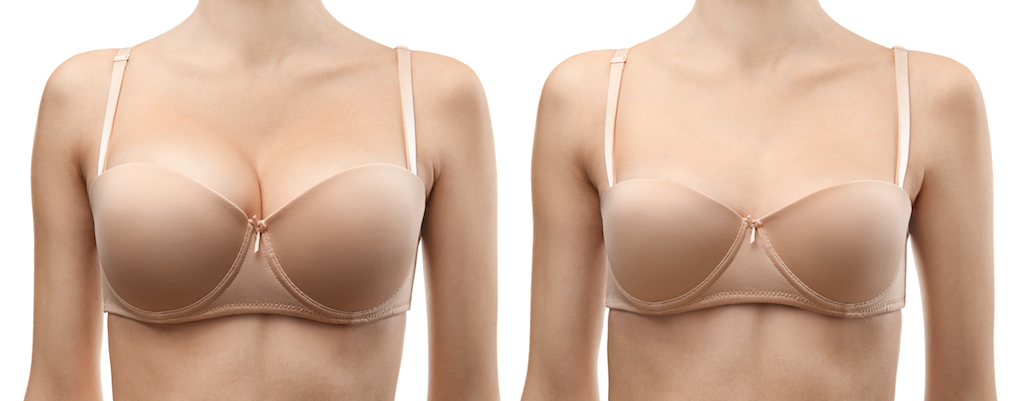 Photo Credit: Shutterstock
Photo Credit: Shutterstock
Excessively large breasts can be more than just a cosmetic issue, and they may cause physical discomfort and emotional stress as well. Many women with disproportionally-sized breasts are constantly self-conscious about their appearance and may try to hide their breasts and bodies with loose clothing. These women also tend to avoid certain social and intimate situations, which further impacts their quality of life. In many cases, “Breast reduction is essentially the same procedure as a breast lift; what qualifies as breast reduction is determined by the amount of tissue removed. If you are a breast reduction candidate, that means you have a severe case of breast sagging (or ptosis) and be experiencing chronic pain. These patients typically require the surgery for health reasons instead of cosmetic concerns, which may be covered by medical insurance,” says Dr. S. Alexander Earle, a double board-certified plastic surgeon.
“Excessively large breasts can look out of proportion with the rest of the body. A good breast reduction must fit each individual’s anatomy to achieve smaller yet proportionate, well-shaped and well-positioned breasts. During the procedure, excess breast tissue and skin are removed to reduce the overall size of the breast. The areola is reduced and the remaining tissue is repositioned to contour the breast to a natural-appearing shape. In many ways, breast reduction is very similar to breast lift surgery, but additionally removes excess tissue from the breasts,” says double board-certified surgeon, Dr. Ran Stark. After this procedure, a vast majority of patients report improvement in self-esteem, as well as back and shoulder pain since the body has less weight on the chest to support.
 Photo Credit: Shutterstock
Photo Credit: Shutterstock
Depending on the extent of the reduction, there are several surgical approaches. In some cases, the desired level of reduction can be achieved with liposuction alone. Best for patients with minimal sagging and healthy skin elasticity, liposuction-based breast reduction uses vacuum suction to remove excess fat that contributes to unwanted fullness. This technique only requires a few very small incisions, which are virtually undetectable once healed.
When glandular tissue and skin must be removed in order to reshape the breasts, traditional breast reduction techniques are used. The vertical or lollipop incision, which is placed around the areola and down to the breast crease, is often used for patients with breast sagging who desire moderate reduction. For women who need more significant reduction and lifting, it may be necessary to use and inverted T or anchor incision from the areola down to the breast crease and along the breast crease. These more extensive approaches are necessary to resize and reposition the areola to match the new, smaller breasts.
Breast reduction recovery can require more downtime than other breast procedures because of restrictions on certain types of movements such as raising the arms, lifting anything that leads to straining, and even driving—and it can take up to 10 weeks for patients to regain full mobility. “It is normal to experience temporary numbness or decreased sensation in the nipples and areolas after surgery, however, this side effect subsides as the body heals,” says Dr. Sachin Shridharani.“Some patients who have a history of very large breasts may actually note increased sensitivity after surgery as the sensory nerves to the nipple and areola no longer have excess weight and stretch on them,” Dr. Shridharani adds. Although patients will see dramatically smaller breasts immediately after surgery, final results are not visible until all swelling subsides after three or four months. “Results are long-lasting, but it is important to maintain a stable weight and healthy lifestyle to keep the new, improved and lifted breasts looking their best,” Dr. Shridharani emphasizes.
For most women, the resulting scars are a small price to pay in exchange for the improvement in how they look and feel both physically and mentally following breast reduction surgery. Breast reduction surgery can provide a dramatic improvement in a woman’s quality of life by enhancing mobility, wardrobe options and self-confidence.























